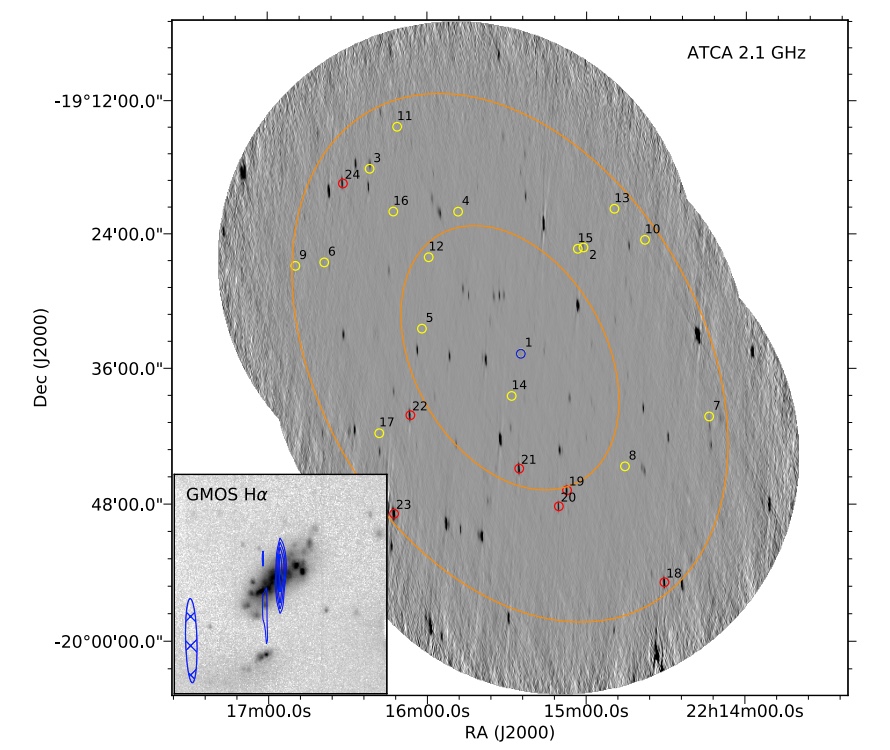| 30th of October 2018 |
|---|
 |
| A Fast Radio Burst host galaxy? |
| by Mahony et al. |
|
Fast Radio Bursts (FRBs) are bright bursts of radio emission that only
last for a millisecond. This makes them extremely difficult to detect
and even more challenging to pinpoint exactly where they are coming
from and what environments they live in. This paper focuses on a
recently discovered Fast Radio Burst, designated FRB 171020, detected
by the Australian Square Kilometre Array Pathfinder (ASKAP) and
which has the lowest dispersion measure detected to date. This is a
measure of how much matter the radio emission has travelled through
meaning this FRB is likely the closest ever detected. This allows us
to narrow down enormously the distance to the FRB and search for the
galaxy it originated from. Using the optical colours of galaxies to
estimate their distances we have identified a nearby spiral galaxy
called ESO 601-G036 to be the most likely host galaxy of this FRB. If
ESO 601-G036 is the host galaxy of this FRB this will allow us to
study the environments and galaxy properties of FRBs in unprecedented
detail and provide insight into what causes these extreme bursts.
The image above shows the ATCA radio continuum image of the field of FRB 171020 at 2.1 GHz. The orange ellipses mark the 1- and 2-standard deviation confidence localization regions of FRB 171020. Yellow circles are optically-selected candidates from the WISE×SCOSPZ catalog, red circles are radio-selected candidates. The blue circle highlights the position of ESO 601−G036. The inset show a GMOS H-alpha image of the galaxy ESO 601–G036 overlaid with a deep ATCA 2.1 GHz radio continuum emission shown in blue contours. The results are published in Astrophysical Journal Letters, and are available in this preprint. |